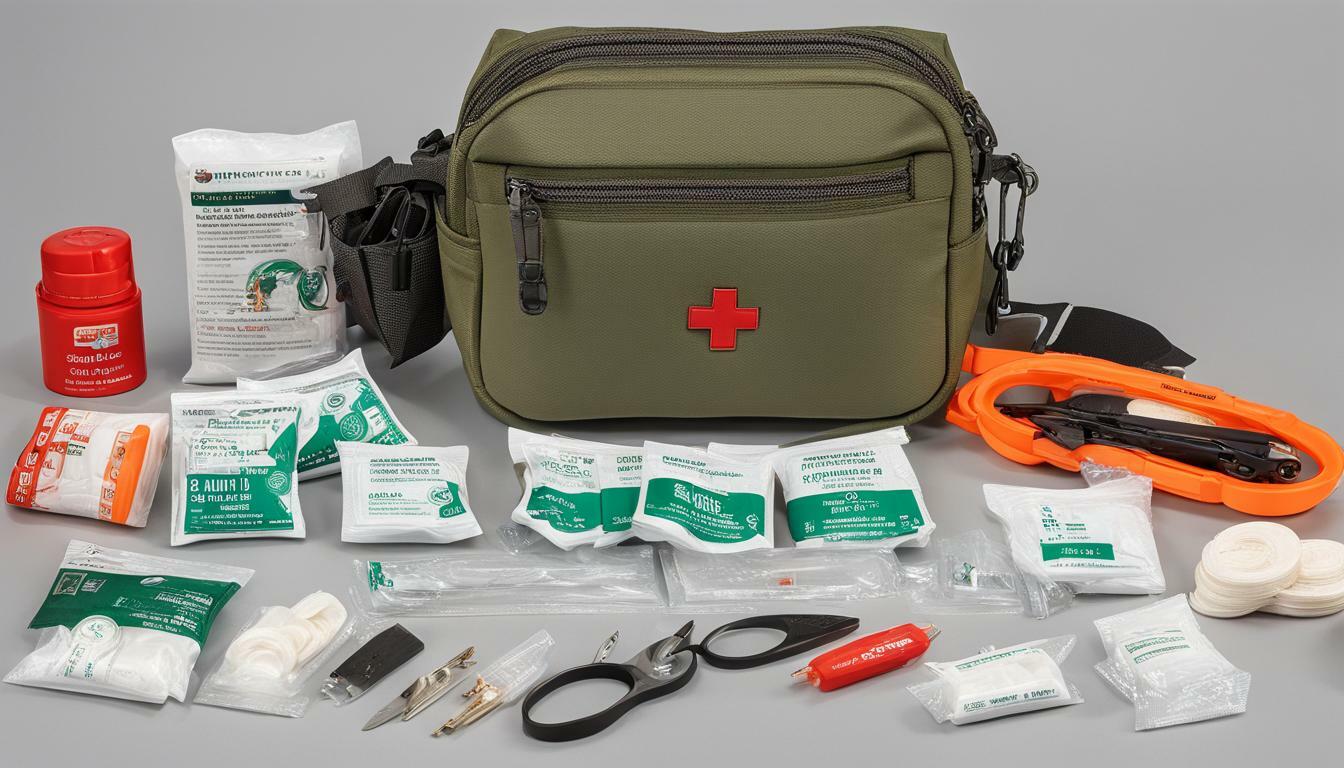Wildlife videography can be an exciting and rewarding experience, but it can also be dangerous if proper precautions are not taken. As a wildlife videographer, you must prioritize the safety of both yourself and the animals you are filming. This is why having a first aid kit specifically designed for wildlife videographers is crucial. A comprehensive first aid kit can help you address injuries or accidents that may occur while filming and ensure that you are well-equipped to handle any medical emergencies.
When capturing animals on film, it is essential to do so safely and with minimal disturbance to their natural habitat. This means following proper safety guidelines, using appropriate equipment, and understanding the risks associated with specific wildlife species. By prioritizing animal safety and taking the necessary precautions, you can capture breathtaking footage while respecting the animals and their environment.
Key Takeaways
- A first aid kit specifically designed for wildlife videography is essential for addressing injuries or accidents that may occur while filming.
- Capturing animals safely and with respect for their natural habitat should be a top priority for wildlife videographers.
- Proper safety guidelines, equipment, and understanding of animal behaviour are crucial in wildlife videography.
The Importance of Animal Safety in Wildlife Videography
When wildlife videographers set out to capture stunning footage of animals in their natural habitats, it is imperative that they prioritize the safety and well-being of the animals they are filming. Animal safety is not just an ethical concern but also a legal one, as some countries have strict laws in place to protect wildlife from harm.
As a wildlife videographer, it is important to understand the various ways in which your filming may impact the animals you are trying to capture. Even seemingly harmless actions, such as making sudden loud noises or getting too close to an animal’s habitat, can cause stress and harm to the animals, leading to long-lasting negative effects on their health and well-being.
To ensure animal safety while filming, it is essential to use proper techniques and equipment. This includes understanding the animals’ behavior, maintaining a safe distance, and using equipment that minimizes disturbance, such as telephoto lenses or stabilizers. By following these guidelines, you can capture stunning footage while minimizing the impact on the animals’ lives.
It is important to remember that wildlife videography is not just about capturing breathtaking footage, but also about respecting and protecting the natural environment and the animals that inhabit it. By prioritizing animal safety, you can make a positive contribution to wildlife conservation efforts and set an example for other filmmakers and videographers.
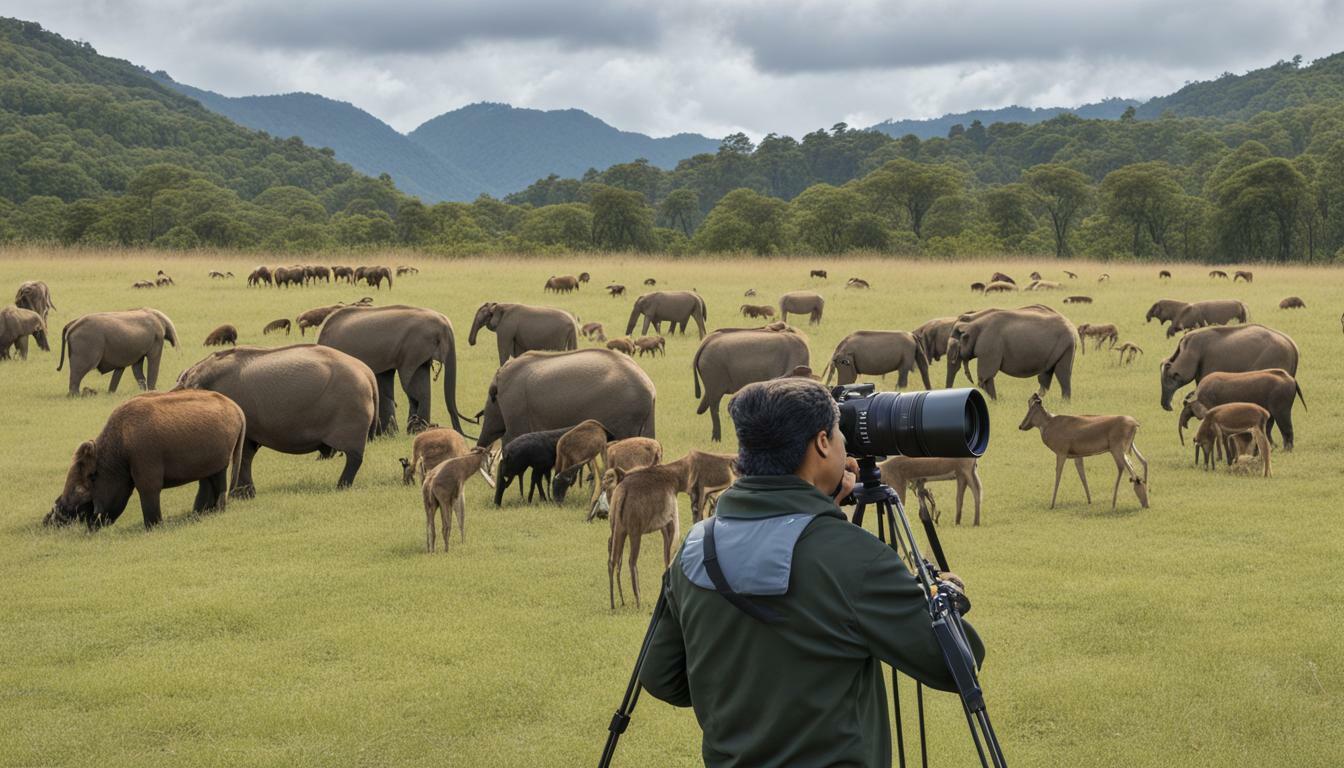
Essential First Aid Tools for Wildlife Videographers
As a wildlife videographer, it is essential to have a first aid kit that is specifically designed to cater to the needs of filming in the wild. Your kit should be equipped with all the necessary first aid essentials to handle any injuries or accidents that may occur while capturing animals safely.
The following are some of the essential items you should have in your first aid kit:
| Item | Purpose |
|---|---|
| Bandages | Used to dress wounds and stop bleeding |
| Antiseptic solution | Used to clean wounds and prevent infection |
| Tweezers | Used to remove splinters, thorns or ticks from skin |
| Scissors | Used to cut dressing and gauze |
| Gauze pads | Used to cover wounds and protect them from infections |
| Disposable gloves | Used to prevent cross-contamination and protect against infections |
| Painkillers | Used to alleviate pain and discomfort |
| Instant ice packs | Used to reduce swelling and inflammation |
| Snakebite kit | Used to treat snake bites |
Having these first aid essentials readily available in your kit can make a huge difference in effectively handling any injuries you or your team may encounter while filming in the wild.
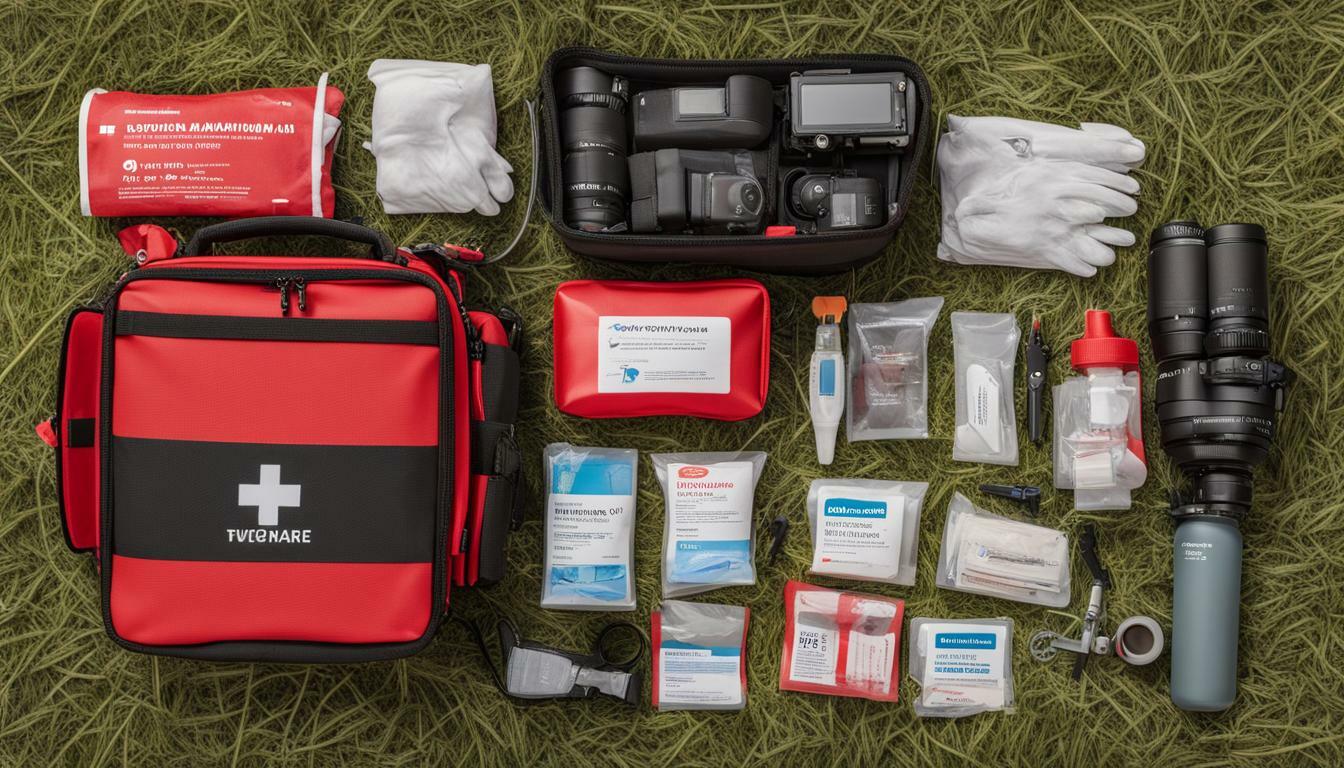
Remember to check your kit regularly and restock any used or expired items. Also, make sure you and your team members know how to use each item in the kit and are trained in basic first aid techniques.
By ensuring that you have a comprehensive first aid kit equipped with all the essential tools, you can confidently and safely capture animals in their natural habitats without compromising your well-being or that of the animals.
Preparing a Comprehensive First Aid Kit for Wildlife Videography
Wildlife videography is a thrilling and awe-inspiring pursuit, but it comes with its own set of risks and challenges. As a videographer, it is crucial to be prepared for any medical emergencies that may arise while filming animals in their natural habitats. In this section, we will guide you through the process of preparing a comprehensive first aid kit specifically tailored for wildlife videography, ensuring that you are well-equipped to handle any unexpected situations.
When preparing your first aid kit, it is important to consider the specific needs of wildlife videography. You will need to bring along essential first aid tools and supplies that are light, portable, and easily accessible. Here are some items that should be included in every wildlife videographer’s first aid kit:
- Bandages – to dress wounds or stop bleeding in case of an injury
- Antiseptic solutions – to clean wounds and prevent infection
- Tweezers – to remove any foreign objects such as thorns or splinters from the skin
- Gauze pads – to cover injuries or wounds
- Instant cold packs – to reduce swelling and inflammation
- Scissors – to cut clothing or materials if necessary
- Lightweight emergency blanket – to keep warm in case of exposure
- Medical gloves – to prevent contamination
- Eye wash solutions – to clean and soothe irritated eyes
Additionally, it is important to bring along any personal medications, such as allergy medication or inhalers, and any equipment that may be necessary for specific medical conditions. Make sure you are familiar with how to use these tools and supplies, and that they are not expired.
Another important aspect to consider when preparing your first aid kit is the environment in which you will be filming. You may need to pack additional supplies such as insect repellent, sunscreen, or a snake bite kit depending on your location and the types of animals you will be filming.
By ensuring that you have a well-stocked and comprehensive first aid kit, you can focus on capturing breathtaking footage while knowing that you are prepared for any medical emergencies that may arise.
Maintaining Your First Aid Kit
It is important to regularly check and maintain your first aid kit to ensure that all supplies are up-to-date and in good condition. Check expiration dates and replace any supplies that have been used or have become damaged. Keep your kit in a waterproof and durable container, and pack it with your other videography equipment so that it is always easily accessible.
In the next section, we will explore some common injuries and emergencies that wildlife videographers may encounter while filming, and discuss how to effectively administer first aid until professional help is available.
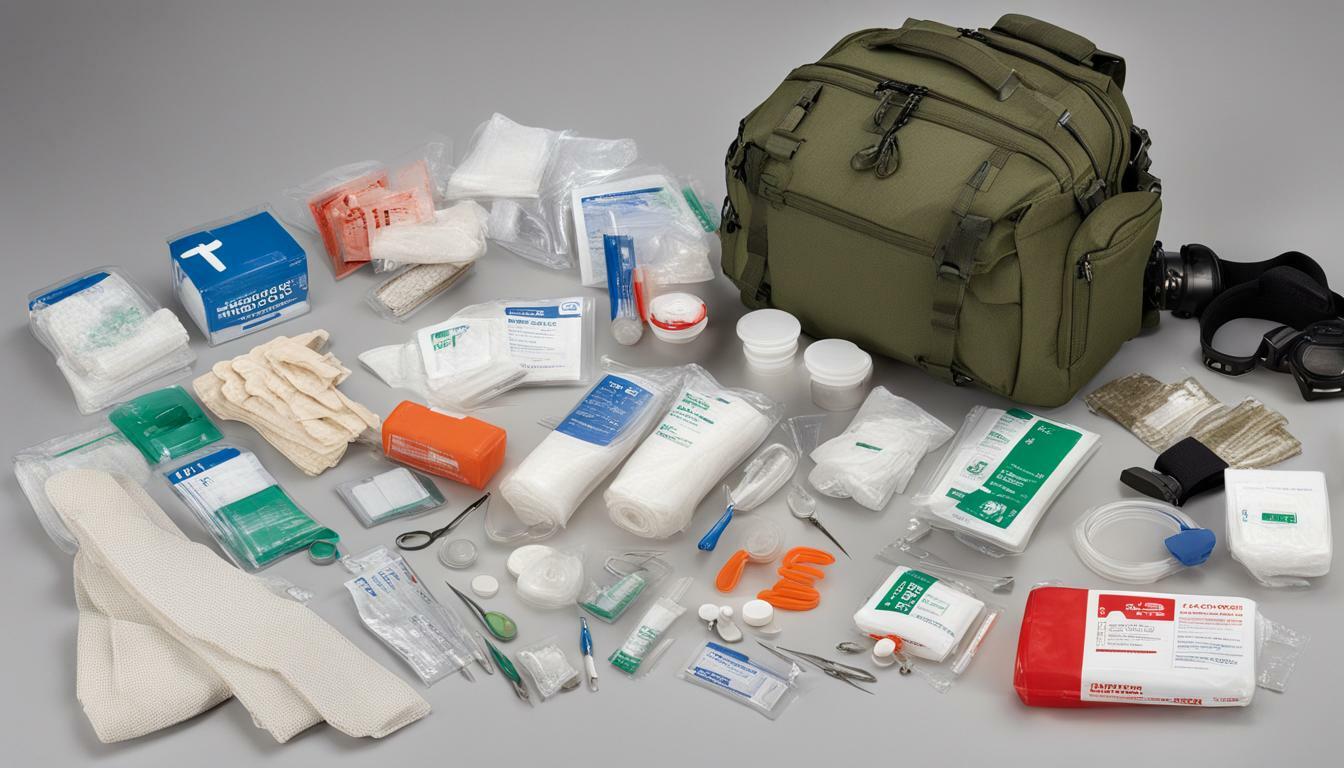
Common Injuries and Emergencies in Wildlife Filming
Wildlife filming can be a thrilling and rewarding experience, but it also comes with its own set of risks and challenges. While filming in the wild, videographers may encounter various injuries and emergencies that require proper first aid treatment. Understanding the possible risks and having essential first aid tools on hand is crucial in ensuring the well-being of both the videographer and the wildlife.
One of the most common injuries that videographers may encounter is a snake bite. In the event of a snake bite, it is essential to keep the affected limb immobilized and seek immediate medical attention. In some cases, a snakebite kit may be included in the first aid kit to help slow down the spread of venom before professional help arrives.
Another common risk in wildlife filming is the potential to come into contact with poisonous plants or insects. Tweezers and antiseptic solutions should be included in the first aid kit to help remove any thorns or stingers and prevent infections.
In addition, wildlife filming can also put videographers at risk of animal attacks. In the event of an animal attack, it is crucial to maintain a safe distance and avoid further provoking the animal, especially if it is a predator. The first aid kit should include bandages and disinfectants to treat any cuts, scratches, or bites that may result from an animal attack.
Other possible injuries or emergencies include heatstroke, hypothermia, and dehydration, which can be avoided by staying properly hydrated and dressing appropriately for the weather conditions. It is also important to know how to identify the signs of these conditions and administer proper first aid treatment.
By understanding the possible risks and being prepared with essential first aid tools, wildlife videographers can safely capture stunning footage of animals in their natural habitats.
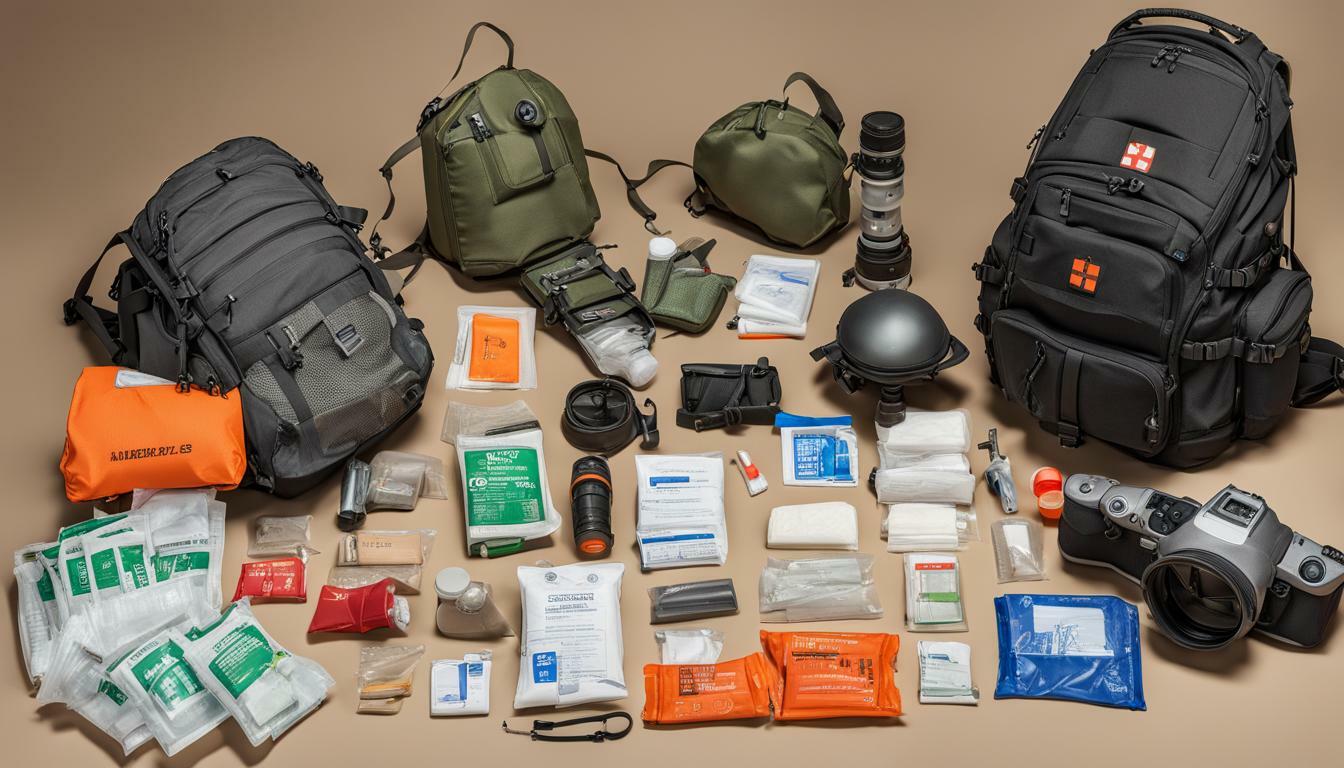
Safety Guidelines for Wildlife Videographers
When capturing animals in the wild, it is crucial to prioritize the safety of both the animals and the videographer. Here are some important guidelines to follow:
- Maintain a safe distance: Keep a distance that allows you to capture footage without causing stress or disturbance to the animals. It’s important to remember that wildlife can be unpredictable, so always be prepared to move away quickly if necessary.
- Respect animal behavior: Avoid startling or threatening the animals by observing their behavior and movements. Learn about the specific species you are filming to anticipate their reactions and adjust accordingly.
- Understand the risks: Different animals can pose different levels of risk to videographers. Be aware of potential hazards such as venomous snakes, aggressive predators, or dangerous terrain.
By following these safety guidelines, you will not only protect yourself and the animals but also capture more natural and undisturbed footage.
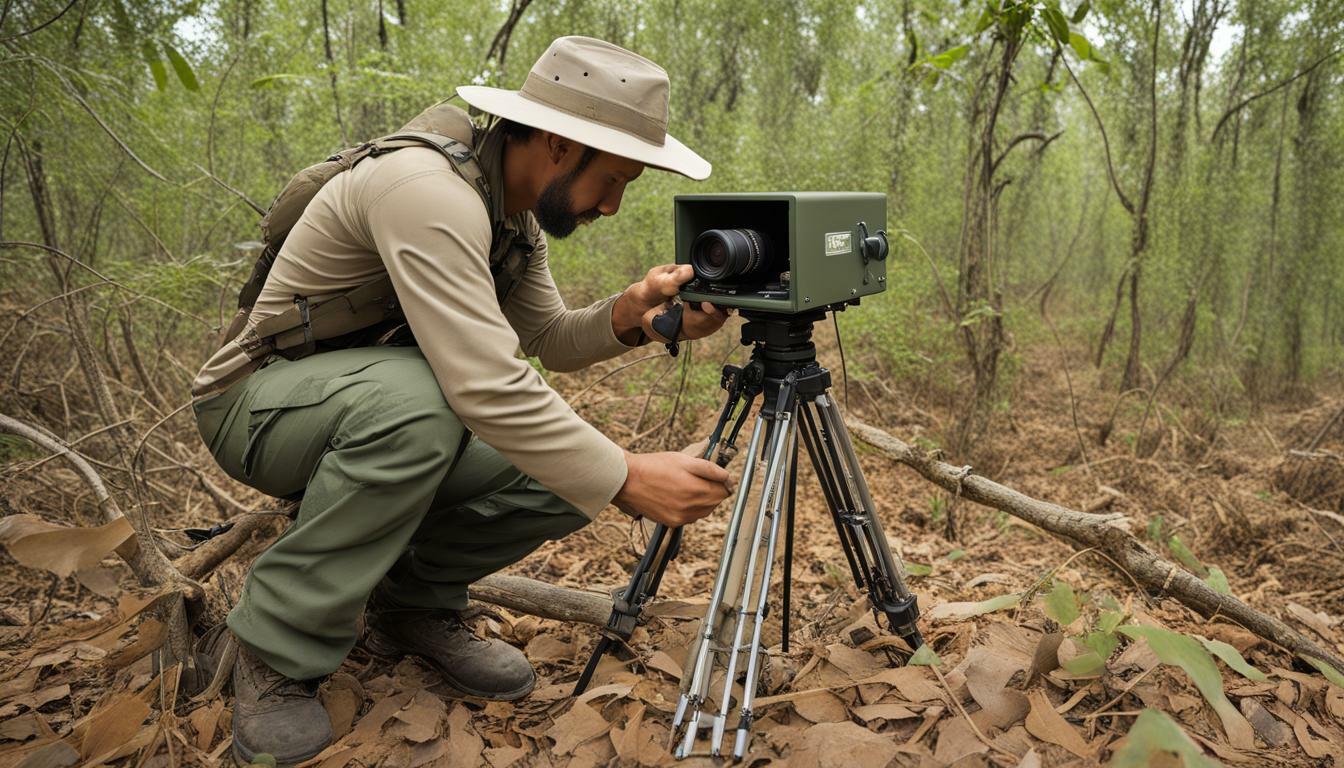
Choosing the Right Photography Gear for Animal Videography
Choosing the right photography gear is important for capturing high-quality footage while minimizing disturbance to animals. One of the most essential pieces of equipment is a telephoto lens, which allows you to zoom in on the action from a safe distance. This is especially important when working with larger, potentially dangerous animals.
A tripod is also crucial for stabilizing your shots and reducing camera shake. When selecting a tripod, consider one that is lightweight and easy to carry, but also sturdy enough to support your camera and lens combination.
Other useful accessories include a camera bag or case to protect your gear from the elements and wildlife, a lens hood to reduce glare and protect your lens, and a remote shutter release to avoid disturbing wildlife while capturing shots. It’s also important to dress appropriately for the environment and conditions you will be filming in, including clothing that blends in with the natural surroundings.
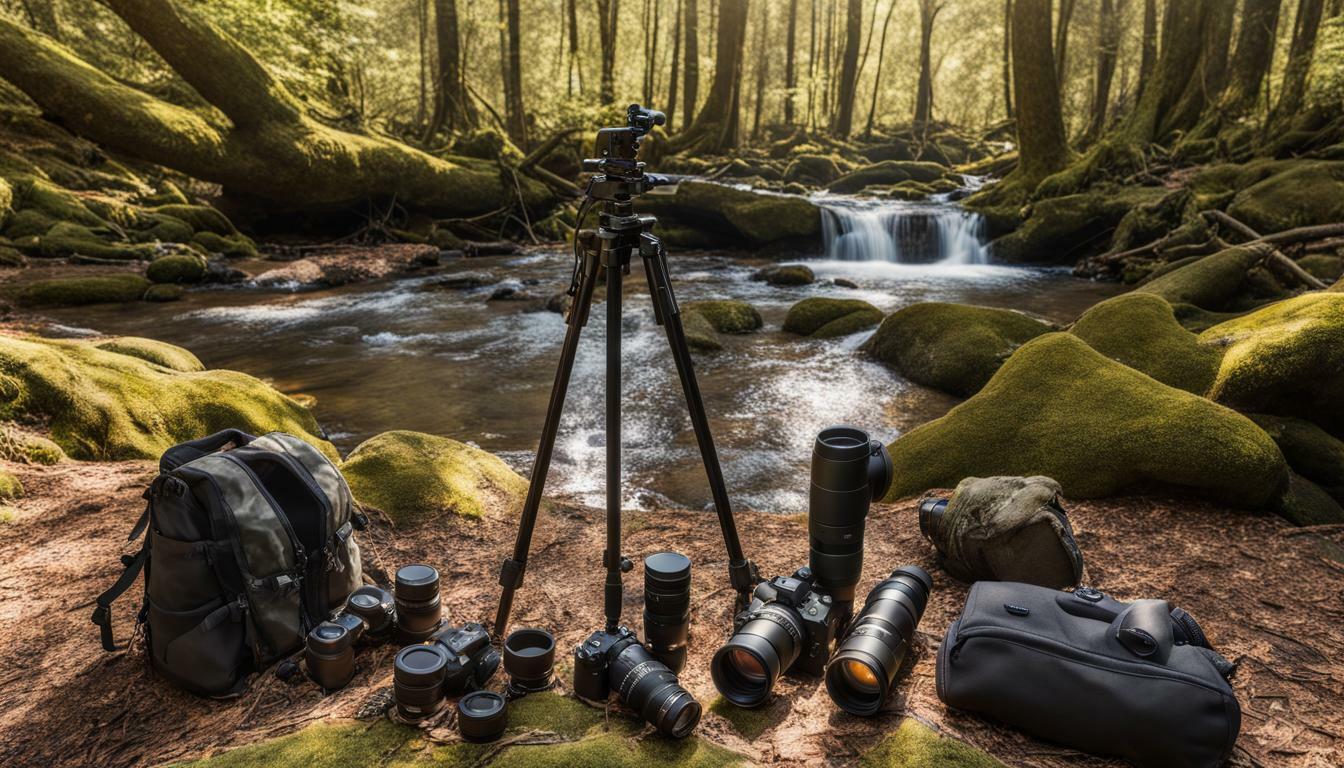
Overall, the key to choosing the right photography gear for animal videography is to prioritize safety and respect for the wildlife. By using the right equipment and techniques, you can capture stunning footage while minimizing your impact on the animals and their habitats.
Tips for Maintaining a Safe Filming Environment
When capturing animals safely during wildlife videography, it is crucial to maintain a safe filming environment for both the videographer and the animals. Here are some practical tips to help you achieve this:
- Camouflage: Use natural or camouflaged clothing and equipment to blend in with the surrounding environment. Avoid bright colors or anything that may startle or agitate the animals.
- Research: Before heading out to film, research the animals you plan to capture on film. Learn about their behavior, habitats, and any potential dangers associated with them. This will help you anticipate their movements and avoid disturbances.
- Maintain a Safe Distance: When filming animals, keep a safe distance to avoid interfering with their natural behavior. Respect their boundaries and avoid getting too close, especially when animals are in breeding or mating season or caring for their young.
- Protect Yourself: Wear protective gear such as long pants, sturdy boots, and gloves to protect yourself from potential hazards such as bites, scratches, or stings.
- Protect Equipment: Use proper equipment such as lens hoods and rain covers to protect your equipment from weather and environmental conditions.
By following these tips, you can maintain a safe environment for capturing animals safely through wildlife videography. Remember, the well-being of the animals should always be your top priority.

Handling Injured Wildlife During Videography
As a wildlife videographer, it is important to have a plan in place for handling injured animals that you may come across during your filming. While capturing animals safely is a priority, accidents and injuries can happen unexpectedly. It is important to prioritize animal safety and take appropriate measures to ensure their well-being.
If you come across an injured animal, do not attempt to handle it on your own, as this can cause further harm to the animal and potentially put yourself in danger. Instead, contact local wildlife authorities or rehabilitation centers who have the expertise and resources to safely handle the situation.
While waiting for expert help to arrive, it is important to approach the injured animal with caution, maintaining a safe distance and avoiding sudden movements or loud noises that may cause additional stress. If necessary, you can provide basic first aid such as applying pressure to stop bleeding or covering the animal with a blanket to keep it warm, being careful not to cause further harm.
Remember that animal safety should always be a top priority, and it is important to be prepared for unexpected situations while out in the field. Having a comprehensive first aid kit, as well as knowledge of basic first aid techniques, can make a difference in the outcome of an emergency situation.
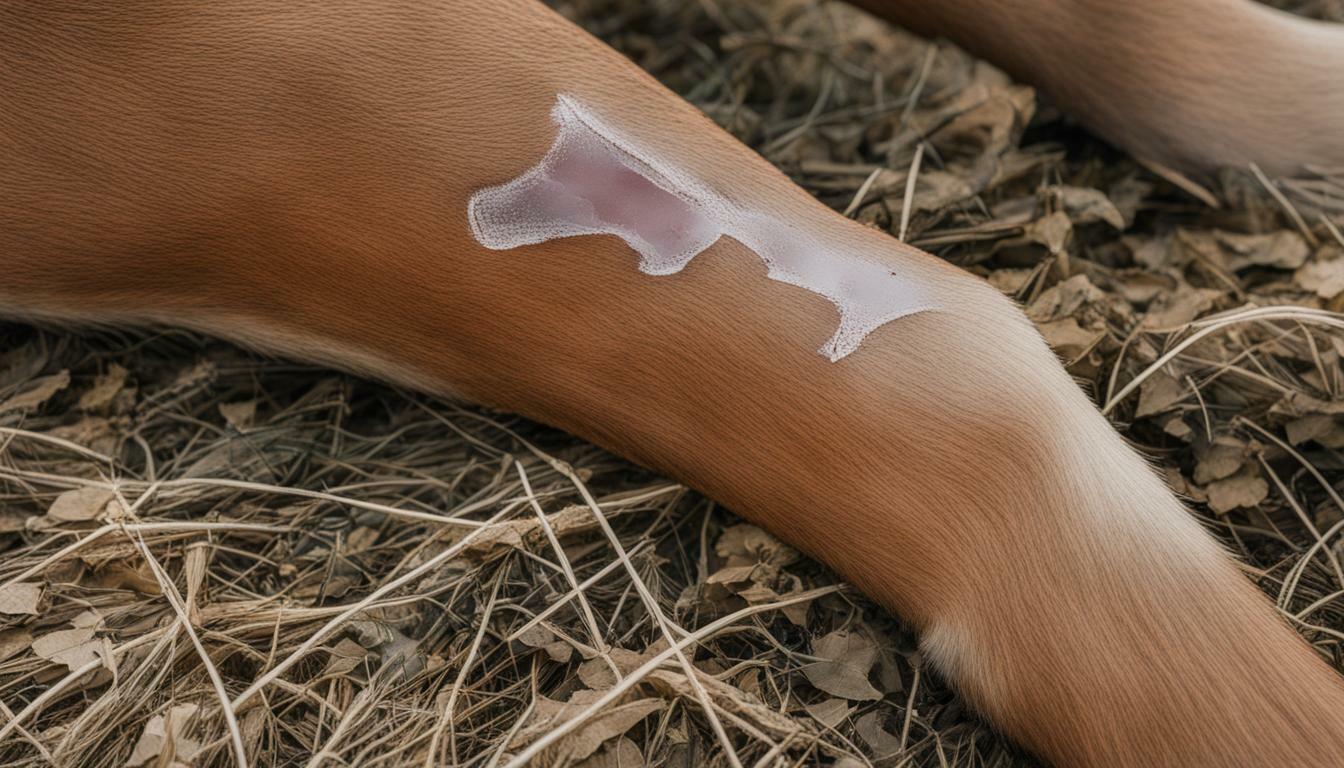
Essential First Aid Training for Wildlife Videographers
As a wildlife videographer, you are constantly exposed to the risk of injuries and accidents both for yourself and the animals you are filming. This makes it essential to have a good understanding of first aid essentials and how to administer them in emergency situations.
First aid training covers a wide range of topics, including treating cuts and wounds, handling fractures, and managing head injuries. By acquiring this knowledge, you will be better equipped to deal with any situation that may arise while out in the field.
First aid training courses are readily available and can be completed in just a few hours. They cover the fundamentals of first aid, including CPR, basic life support, and the use of first aid kits. You can also find specialized courses designed specifically for wildlife videographers, which provide additional information on handling wildlife-related injuries or incidents.
Having first aid certification will not only give you the skills and confidence necessary to handle emergency situations but also increase your credibility as a professional wildlife videographer. It demonstrates your commitment to animal safety and responsible wildlife filming practices.
Make sure to keep your first aid training up-to-date by participating in refresher courses or reviewing relevant materials online. By doing so, you will stay knowledgeable about the latest techniques and guidelines for administering first aid, which will enable you to handle any situation that arises quickly and efficiently.
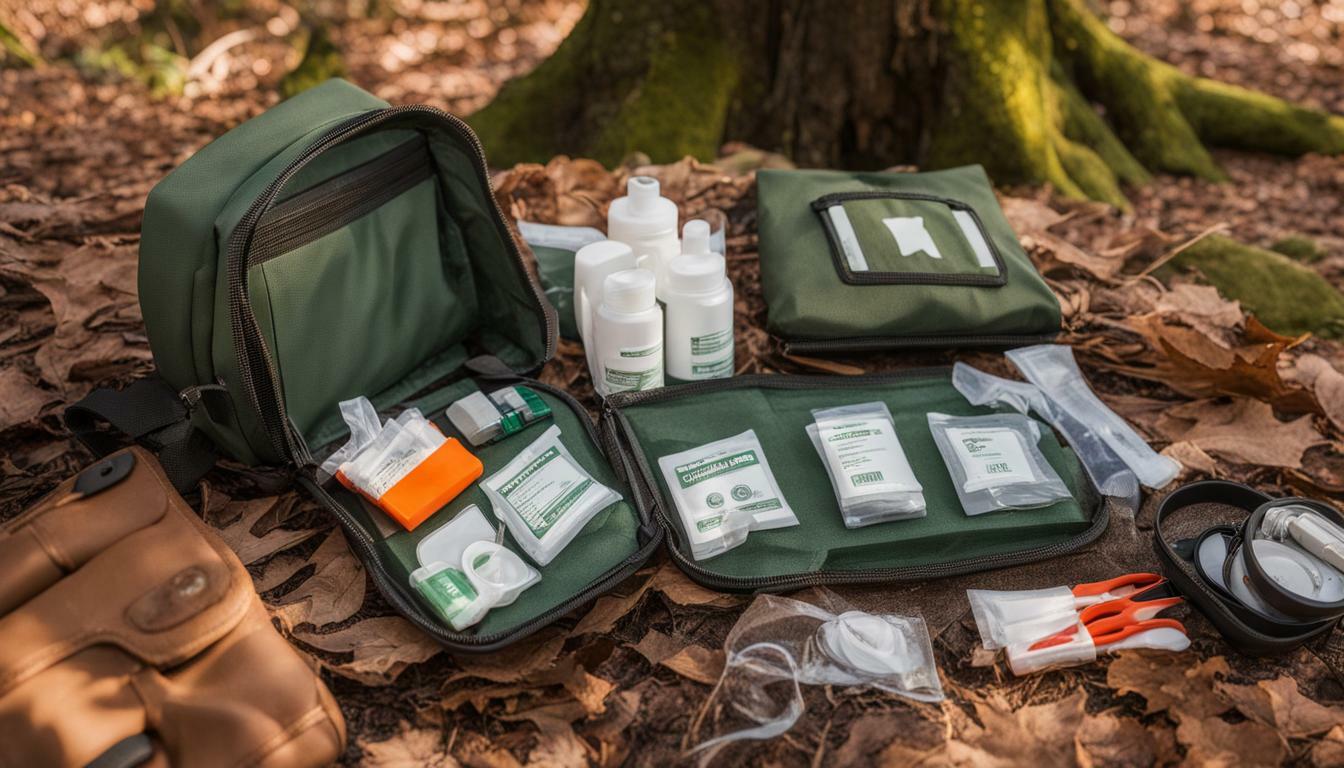
Staying Updated with First Aid Techniques and Guidelines
As a wildlife videographer, it’s crucial to stay updated with first aid techniques and guidelines to ensure you’re equipped to handle any unexpected situations while filming. This includes keeping up-to-date with the latest first aid essentials specifically relevant to wildlife videography.
There are various ways to refresh your knowledge and skills, such as attending regular training courses or workshops. These courses can cover topics like basic first aid techniques, emergency response protocols, and specific techniques for administering first aid to animals.
It’s also important to regularly check for updates and changes in first aid guidelines, especially as new technologies and techniques emerge. This can help you improve your skills and stay prepared for any potential emergencies or injuries that may occur while filming wildlife.
By staying updated with first aid techniques and guidelines, you can ensure the safety and well-being of both yourself and the animals you’re filming. It’s an important part of being a responsible wildlife videographer and capturing animals safely, while minimizing any potential harm.
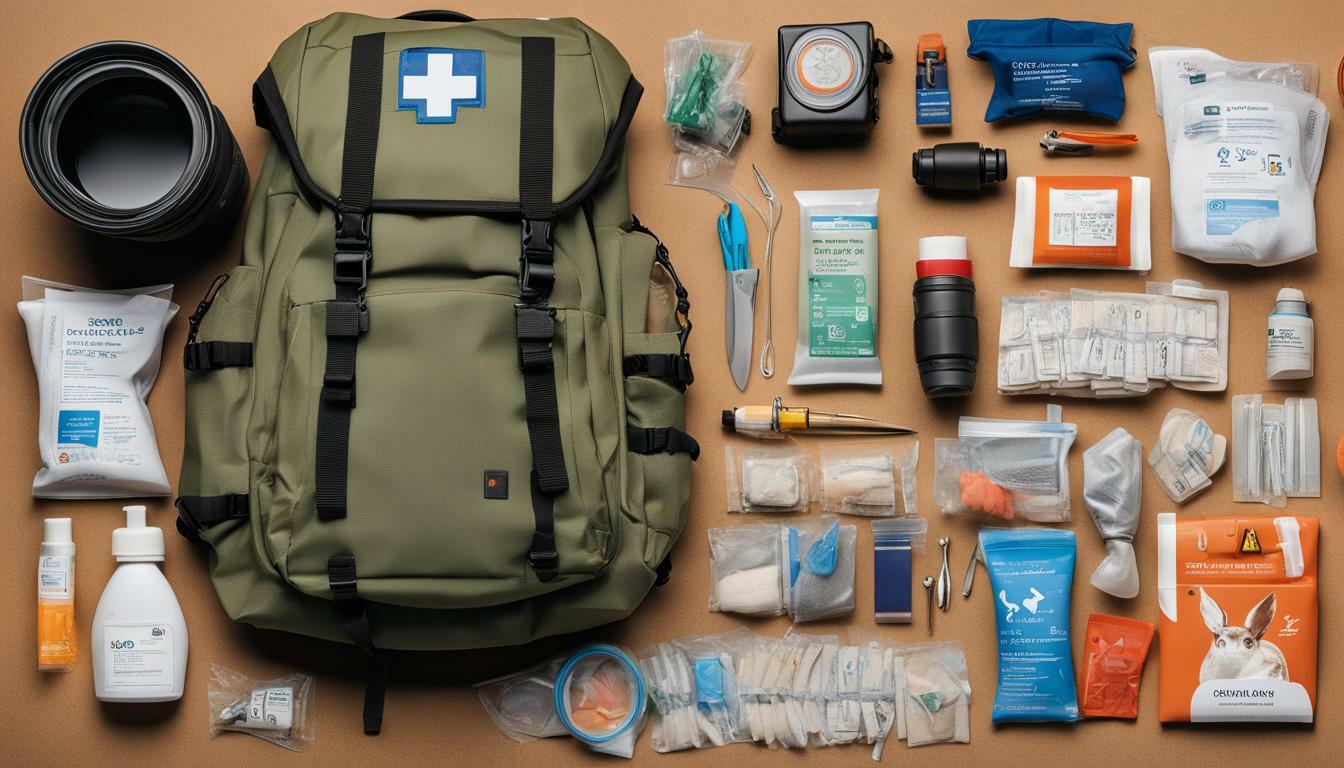
Capturing Animals Safely: A Priority for Wildlife Videographers
As a wildlife videographer, capturing stunning footage of animals in their natural habitats is an exciting and rewarding experience. However, it is important to prioritize the safety and well-being of both yourself and the animals you are filming.
A comprehensive first aid kit specifically designed for wildlife videography is essential to have on hand in case of any medical emergencies. This kit should include items such as bandages, antiseptic solutions, and tweezers to address common injuries that may occur while filming.
In addition to having the proper first aid equipment, it is important to follow safety guidelines when capturing animals. This includes maintaining a safe distance, respecting animal behaviour, and understanding the risks associated with specific species.
Choosing the right photography gear, such as telephoto lenses and stabilizers, can also help minimize disturbance to the animals while achieving high-quality footage.
In the event of an injured animal, it is crucial to contact local wildlife authorities or rehabilitation centers to ensure proper care and treatment.
Obtaining essential first aid training and staying updated with techniques and guidelines relevant to wildlife videography is also key to being well-prepared for any unexpected situations while out in the field.
Capturing animals safely should always be a top priority for wildlife videographers. By following proper safety protocols and having a well-equipped first aid kit on hand, you can capture breathtaking footage while respecting and protecting the animals and their natural habitats.
